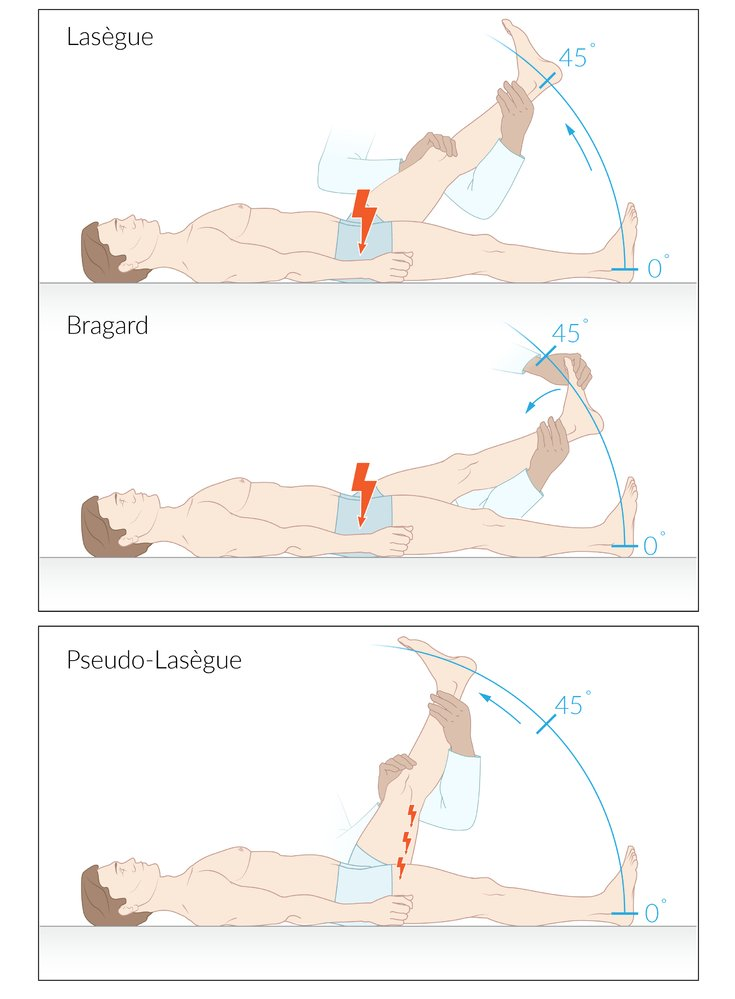Epidemiology
Etiology
Pathophysiology
Clinical features
Lumbosacral radiculopathy
Provocative maneuvers for lumbosacral radiculopathy
Leg raising maneuvers are used to screen for lumbosacral radiculopathy
- Straight leg raise test (Lasegue sign): A straight leg raise leads to increased pain in the ipsilateral leg with radiation to the motor or sensory area of the affected nerve root.
- Pseudo-Lasègue sign (bottom): A straight leg raise produces an aching pain along the back of the leg (rather than typical radicular pain). This indicates that the pain likely originates from the hamstring muscles (usually occurs with the leg flexed to > 60º).
- Bragard sign: A straight leg raise leads to increased pain in the ipsilateral leg; lowering the leg to just below the level where pain is produced and pulling the foot to dorsiflexion reproduces the pain.
- Crossed straight leg raise test: A crossed straight leg raise leads to pain in the ipsilateral leg radiating to the motor and sensory area of the affected nerve root.
- Reverse straight leg raise test: A reverse straight leg raise leads to pain in the ipsilateral leg radiating to the motor and sensory area of the affected nerve root.
Diagnostics
Treatment
Conservative management
- For patients with severe pain, consider periradicular therapy: image-guided injection of local anesthetic (e.g., ropivacaine) and glucocorticoids at the intervertebral foramen to reduce inflammation and edema at the affected nerve root